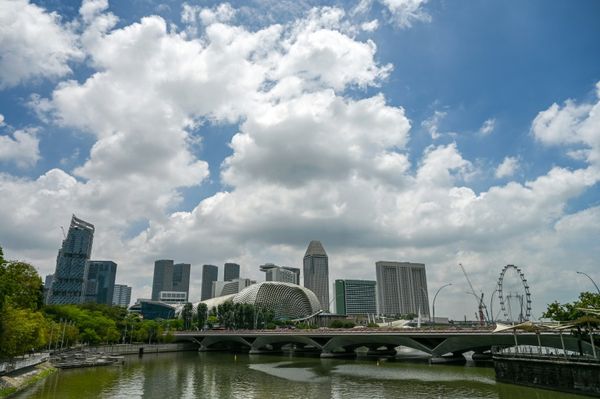
One of those household names and brands was Rasna, a home-grown soft drinks concentrate. Rasna became popular for sponsoring a Sunday animated show, Spiderman, which ironically had been syndicated from the USA. Rasna also used every trick in marketing textbooks — newspaper and magazine advertisements, point of purchase collaterals, direct mailers and community outreach programmes — to make the brand popular. Yet, strangely, very few people knew the people behind the product, despite the brand’s overwhelming popularity.
The brand custodian for many years, Areez Khambatta, has passed away, rekindling memories of the 1980s and re-igniting curiosities about Rasna and the people behind the brand. Khambatta’s low profile and relative inconspicuousness, despite the giant strides made by Rasna, also inspire some questions about India’s business history and whether it was an established national ethos to underplay its business icons. The answer, both yes and no, is actually much more nuanced.
You might also like
How the new bill aims to protect your personal data
5 charts tell the story of tech layoffs
This could be India's biggest Series A funding round
This Mumbai couple’s 860 sq ft flat is the biggest they’ve rented so far
It is true that the India of the 1970s and 1980s looked askance at business success, eyed businessmen suspiciously. Bollywood of the 1970s often portrayed traders, merchants and businessmen as miserly and malevolent. Media found it indecorous to profile businessmen, write about brands or celebrate personalities behind the brands. This was probably a hangover from the 1950s and 1960s, when India was taking its baby steps as a new-found republic and numerous banking and insurance scams burst out into the open, to which the government response was to nationalise banks, coal mines and insurance companies. The government’s poverty alleviation slogans and avowed socialist policies — implemented with the blunt force of steep income tax rates (reaching over 90%) — also reinforced the idea, albeit subliminally, of business income being squalid and as worthy of state appropriation.
Many Indian business houses dialled down their presence in the fear of attracting the covetous eye of the income tax department. Anecdotes abound about how women members of business families rarely sported jewellery, even if they were heirlooms, lest they be confiscated by an over-zealous income tax department. The government even went to the extent of legislating how much salary could be paid to a managing director, forcing many companies to adopt the American corporate title of “president" for their leadership members to side-step this rule.
Dread of the midnight knock forced Corporate India to fly below the radar. But there were many other business houses, like the Khambattas, who also personally found it disreputable to either become public figures or to seek publicity, and preferred that their brands, or balance sheets, do all the talking.
The advent of economic reforms in 1991 changed many established mores in the country and inculcated a healthy regard for entrepreneurship and competition. But, even before that during the 1980s, when a whiff of change was already in the air, many corporate titans chose to shed their self-imposed reticence, some with very focused strategies. For example, Dhirubhai Ambani, founder of Reliance Group, frequently courted the capital markets because the group was often raising capital for its expansion and downstream integration. The rise in household savings rate during the 1980s inspired many companies to emulate Ambani’s strategy.
With economic reforms and liberalisation of capital markets came increased competition which forced many companies to develop a public persona. Simultaneously, as television set prices became more affordable, satellite and cable television made its entry into households and the Indian economy became much more accepting of global brands — the battle for eyes and wallets forced many companies and brands to shed their earlier introversion. The Godrej group, for example, was forced to emerge from its shell when Godrej Soaps decided to go public with its first initial public offering in 1993.
Rasna, though, had to adopt a different strategy. The Indian market for beverages was carpet-bombed by the two competing multinational brands: Coke and Pepsi. Huge capital outlays defined the Indian version of the global cola wars: in advertising, marketing and brand-building, distribution, packaging and communication.
Rasna, as a strategy, decided to withdraw from this spending war and become much more sharply targeted; it became exceedingly scrupulous about the internal rate of return on every rupee spent on marketing and advertising. This then further accentuated its persona of being withdrawn and media-shy, though it has been growing its core business area of beverage concentrates over the past few years without making too much of a public ballyhoo. It now has around 64 beverage concentrates, straddling multiple variant categories (including without sugar) and is present in almost all price points. Its manufacturing footprint extends across the Indian geography — from Dehradun to Chittoor, from Kalol to Ambala, with Mahij, Saij, Mehsana, Daman and Tanuku in between.
While Indian society and Indian media might have shed some of its earlier distaste of Indian business and businessmen, there are probably still some business groups which value relative anonymity and the strategic cover it affords them. Both Areez Khambatta and his son Piruz Khambatta (who has been the chairman and managing director for some time now) deserve recognition and accolades for not only surviving an unceasing marketing battle waged by affluent MNC brands but for also building a sustainable and successful home-grown brand. Their example is bound to have inspired many more Indian entrepreneurs.
Elsewhere in Mint
In Opinion, Raghuram G. Rajan says deglobalisation poses a climate threat. Vivek Kaul tells the reason why Twitter can't die. Madan Sabnavis calls for caution over India's title of the fastest-growing economy. Long Story says the slowed-down motorcycle is an eloquent sign of India's downturn.







